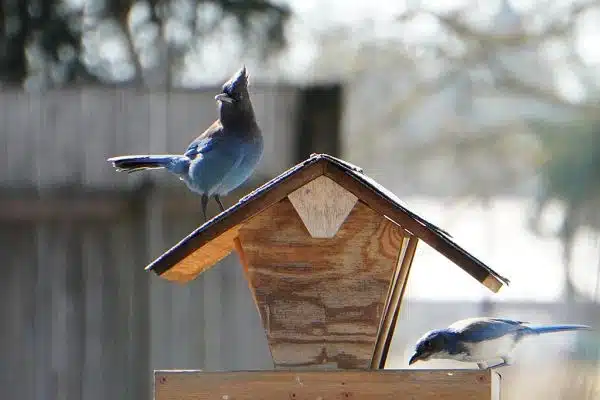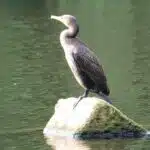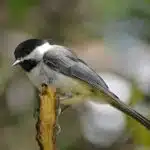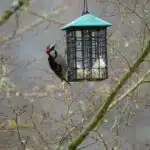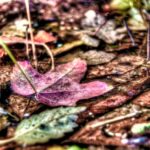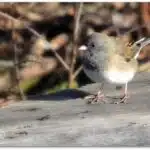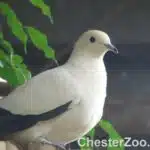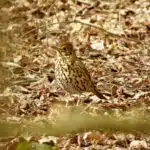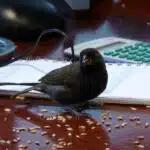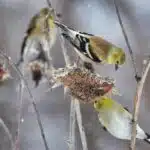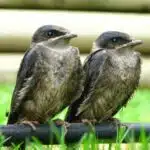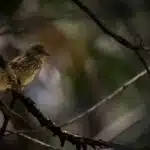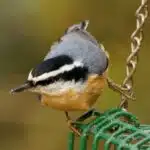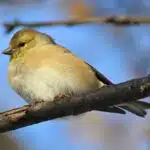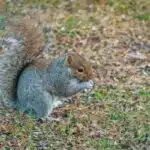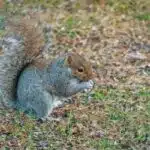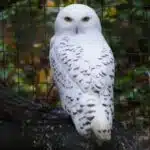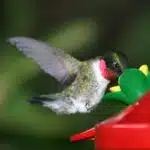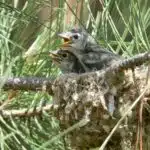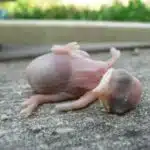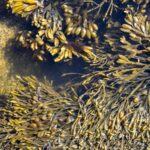Many backyard birdwatchers are interested in attracting a variety of bird species to their yard, and the blue jay is often a sought-after addition. Known for their striking blue plumage and intelligent behavior, blue jays can bring a sense of excitement and energy to any backyard birding experience. However, attracting these birds can be tricky, as they have specific preferences when it comes to food and habitat. In this article, we will explore effective strategies for enticing blue jays to your backyard and creating an environment that meets their needs.
To successfully attract blue jays to your backyard, it is important to understand their behavior and natural preferences. Blue jays are omnivorous birds that feed on a variety of foods, including nuts, seeds, insects, and small animals like frogs or lizards. They prefer habitats with open spaces for foraging and dense trees or shrubs for shelter and nesting. By creating a backyard environment that mimics these conditions, you can create a welcoming space for blue jays to visit and potentially establish as regular visitors. With some careful planning and attention to detail, you can turn your backyard into a haven for these beautiful birds.
Understanding Blue Jay Behavior
Blue jays are a common backyard bird that many people enjoy watching. To attract these beautiful birds to your backyard, it’s important to understand their behavior. One of the most distinctive characteristics of blue jays is their vocalizations. They have a wide range of calls and songs that they use to communicate with each other, including alarm calls, mating calls, and territorial calls. By learning to recognize these vocalizations, you can better understand when blue jays are in your area and what they’re doing.
Another important aspect of blue jay behavior is their nesting habits. Blue jays are cavity nesters, which means they prefer to nest in hollow trees or other small spaces like birdhouses. They’re also known for being very territorial when they have young in the nest, so if you see a pair of blue jays in your backyard during nesting season (usually from late April through early July), it’s best to give them plenty of space.
Overall, understanding blue jay behavior can help you create an environment that’s more attractive to these birds. By providing the right food and shelter options, you can encourage them to spend time in your backyard and maybe even start a family there.
Transitioning into the next section:
Now that we’ve covered some basic information about blue jay behavior, let’s talk about how you can provide the right food for these birds.
Providing The Right Food For Blue Jays
Blue Jays are known for their lively personalities and unique behaviors. Understanding their behavior can help you attract them to your backyard. Blue Jays enjoy acorns, nuts, and seeds as well as insects and fruit. They also tend to be attracted to shiny objects, so placing a few shiny items in your yard may catch their attention.
To keep Blue Jays coming back to your yard, it is important to provide the right food at the right time. Feeding frequency is key when it comes to attracting these birds. Offering food at consistent intervals will let the birds know that they can rely on your yard for nourishment. Additionally, it is important to ensure that the food you offer meets their nutritional requirements.
When providing food for Blue Jays, offering a variety of options is crucial. In addition to nuts and seeds, consider adding mealworms or suet cakes to your feeder. Fresh fruit like blueberries or grapes can also be a tasty treat for these birds. By offering a variety of options, you’ll increase the likelihood of attracting more Blue Jays and other bird species to your backyard oasis.
Offering A Variety Of Food Options
Shopping for bird food is an important part of attracting jays to your backyard. A variety of food items should be considered, such as nuts, fruits, and sunflower seeds.
Creating a feeding station also helps to attract jays. Placing the station away from potential predators, such as cats, is important for the safety of the birds.
Strategically placing the feeding station near trees, shrubs, and other sources of cover can help to provide safety and security for the birds.
Offering a variety of food options, such as suet, mealworms, and peanuts, can also help to attract jays to your backyard.
Shopping For Bird Food
When it comes to attracting jays to your backyard, offering a variety of food options is crucial. One important factor to consider is shopping for bird food. There are a plethora of options available both online and at local stores. Online resources provide convenience and access to a wider range of products, while local stores offer the opportunity to physically inspect the quality of the food before purchasing.
Before making any purchases, it is important to research which types of bird food attract jays specifically. Some common options include peanuts, sunflower seeds, and suet cakes. It is also important to note that jays enjoy foraging for their food, so scattering some on the ground can be just as effective as using a feeder.
When shopping for bird food, it is important to consider both quality and price. High-quality bird food will not only attract more birds but will also provide them with better nutrition. Local stores may offer more affordable options than online resources due to shipping costs. By weighing these factors and doing thorough research, you can successfully attract jays to your backyard and create an enjoyable birdwatching experience for yourself and others.
Creating A Feeding Station
To attract a wide range of bird species to your backyard, offering a variety of food options is essential. However, it’s not just about the type of food you offer, but also how you offer it. Creating a DIY feeding station can be a fun and rewarding project that not only attracts jays but also other bird species.
When building your own feeding station, there are several important factors to keep in mind. First, make sure the station is sturdy and secure so that it can withstand wind and rain. Secondly, consider placing the feeding station near a tree or other natural cover to provide birds with protection from predators. Lastly, use a mix of feeders and trays to accommodate different types of birds and their feeding preferences.
In addition to attracting jays, creating a feeding station can bring in other bird species such as finches, chickadees, and woodpeckers. By providing a variety of food options at your feeding station such as sunflower seeds and suet cakes, you can create an environment that encourages different types of birds to visit your backyard. With some careful planning and attention to detail, anyone can create an inviting space for feathered friends in their own backyard.
Choosing The Right Bird Feeders
When it comes to attracting jays to your backyard, choosing the right bird feeder is crucial. There are several factors to consider when selecting a feeder that will appeal to these birds. One of the most important things to keep in mind is placement. Jays prefer feeders that are placed in open areas where they can easily spot them from above. Additionally, it’s essential to make sure that the feeders are positioned at a height that is comfortable for the birds to access.
Another critical factor when selecting a bird feeder is maintenance. A well-maintained bird feeder will attract more jays and other species than one that is neglected. This involves regular cleaning of the feeder and its surrounding area, as well as filling it with fresh seed regularly. Dirty feeders can harbor bacteria and mold, which can be harmful to birds and discourage them from visiting your yard.
In summary, choosing the right bird feeder for jays involves considering placement and maintenance. When properly positioned in an open area at a comfortable height, a well-maintained bird feeder can be highly effective at attracting these birds to your backyard. In the next section, we’ll discuss creating shelter and nesting areas for jays – another key element in making your yard an attractive habitat for these beautiful birds.
Creating Shelter And Nesting Areas
Having the right bird feeders is just the beginning of attracting jays to your backyard. Creating shelter and nesting areas is equally important in keeping these birds coming back.
Building materials for birdhouses should be carefully chosen. Avoid using pressure-treated wood, as it can be harmful to birds. Cedar, cypress, and redwood are great options as they are durable and weather-resistant. When building a birdhouse, it’s important to consider the size of the entrance hole, as well as the interior space. For blue jays, a hole size of 2-1/2 inches in diameter is ideal.
Camouflage techniques can also play a role in attracting jays to your backyard. Placing birdhouses near trees or shrubs can provide cover for birds while they enter or exit their homes. Additionally, painting or staining the exterior of a birdhouse to blend in with its surroundings can make it less visible to predators.
To further enhance your backyard habitat for jays and other birds, consider planting native trees and shrubs. These plants not only provide food sources but also serve as natural habitats for birds to build their nests and raise their young. Native plants are adapted to local climate conditions and require less maintenance than non-native species.
Transitioning into our next section about planting native trees and shrubs, it’s important to note that creating an ideal habitat requires more than just providing food sources and shelter options for birds. By incorporating native plants into your backyard landscape, you’re creating a sustainable ecosystem that supports both wildlife and the environment.
Planting Native Trees And Shrubs
One of the best ways to attract jays to your backyard is by planting native trees and shrubs. Native plants provide a natural habitat for birds, insects, and other wildlife that jays depend on for food and shelter. Non-native plants may not provide these same benefits, as they often lack the necessary nutrients and characteristics that native plants possess. By planting native species in your backyard, you can create a healthy ecosystem that will attract a variety of birds, including jays.
Not only do native plants benefit local wildlife, but they also have numerous benefits for homeowners as well. Native trees and shrubs are often more resilient to local weather conditions and require less maintenance than non-native species. They also help to prevent soil erosion, filter pollutants from the air and water, and provide shade during hot summer months. By planting native species in your backyard, you can create a beautiful landscape that is also environmentally friendly.
In summary, planting native trees and shrubs is an excellent way to attract jays to your backyard while also benefiting the environment. By providing a natural habitat for wildlife through the use of native species, you can create an ecosystem that promotes ecological diversity while reducing the need for excessive maintenance. In the next section, we will discuss another important aspect of attracting jays: providing water sources for them to drink from and bathe in.
Providing Water Sources
Native trees and shrubs are an essential part of attracting jays to your backyard. These plants provide the necessary shelter, nesting sites, and food sources for jays. When selecting what to plant in your yard, it is important to choose native species that are well adapted to the local climate and soil conditions. Some excellent options include oak trees, serviceberry bushes, sumac shrubs, and chokecherry trees.
While providing the right plants is crucial for attracting jays, it is also important to offer a source of water. DIY water features such as bird baths or small fountains can be a great addition to your backyard. Water sources not only help attract thirsty birds but also provide a place for them to bathe and groom their feathers. However, keep in mind that the quality of the water is essential; make sure to change it frequently and avoid using chemicals or soaps that could harm the birds.
In summary, planting native trees and shrubs and offering a source of clean water are two key steps in attracting jays to your backyard. By doing so, you will create an environment where these intelligent birds can thrive while adding beauty and diversity to your outdoor space. In the next section, we will discuss how keeping your yard clean and tidy can further enhance its appeal for jays and other backyard birds.
Keeping Your Yard Clean And Tidy
One of the most important things to do if you want to attract jays to your backyard is to keep it clean and tidy. This means organizing your trash in a way that doesn’t attract pests like rats or raccoons, which can scare off birds. One way to do this is by using sealed containers for your garbage and compost, and making sure they are emptied regularly.
In addition to keeping your yard clean, it’s also important to use pest control strategies that don’t harm birds or their food sources. For example, instead of using pesticides on your plants or lawn, you could try natural alternatives like neem oil or garlic spray. You can also use physical barriers like netting or wire mesh to protect your garden from pests without harming birds.
By implementing these strategies for keeping a clean and tidy yard, you can create an environment that is inviting for jays and other birds. In the next section, we’ll discuss how you can further enhance this environment by avoiding harmful chemicals that may be present in some common bird feeding products.
Avoiding Harmful Chemicals
According to a recent survey conducted by the National Audubon Society, over 70 percent of American households use chemicals in their backyards to eliminate pests and weeds. While these chemicals may provide immediate relief for homeowners, they can have detrimental effects on local wildlife populations. Birds are particularly vulnerable to the impacts of pesticides, as they ingest contaminated insects and plants or absorb chemicals through their skin.
The benefits of natural alternatives cannot be overstated when it comes to attracting jays and other birds to your backyard. Using organic methods like companion planting, composting, and integrated pest management can create a healthy ecosystem that supports a variety of bird species. By eliminating harmful chemicals, you’ll also reduce the risk of poisoning birds unintentionally – since many species rely on insects as a primary food source.
The impact of chemical use on wildlife is not limited only to birds’ ingestion habits; it has far-reaching consequences that can affect entire ecosystems. For example, pesticides can contaminate soil and water sources, leading to adverse effects on plant growth and other species’ health. Toxic residues from chemical fertilizers are also known to leach into groundwater supplies and cause algal blooms that harm aquatic organisms. When we take steps towards eliminating harmful chemicals from our backyard habitats, we’re making a positive contribution towards creating a safe environment for all life forms.
By avoiding harmful chemicals in your backyard, you’re not only protecting jays but also contributing positively towards creating a safe environment for all wildlife species in your area. In the next section, we’ll discuss some practical steps you can take to create an environment that is both welcoming and safe for jays and other backyard feathered friends.
Creating A Safe Environment
Having a safe and chemical-free environment is crucial for the health of the birds that visit your backyard. Harmful chemicals can disrupt their immune systems, inhibit their ability to reproduce, and even cause death. As a backyard birdwatching enthusiast, it is essential to prioritize creating a safe environment for these beautiful creatures.
One way to create a safe haven for birds is by providing nesting opportunities. Blue jays are known to build their nests in trees, so having a few mature trees in your yard can attract them. You can also install nesting boxes specifically designed for blue jays. These boxes should be placed at least ten feet off the ground and within 100 feet of mature trees.
Attracting mates is another reason why birds visit backyards. Male blue jays are particularly attracted to areas with plenty of food sources and nesting opportunities. Providing food such as sunflower seeds, peanuts, and suet cakes can attract them. It’s also helpful to have dense shrubs or bushes where they can hide while scouting out potential mates. By creating an ideal environment for blue jays, you increase the likelihood of having them visit your backyard regularly.
To further attract blue jays to your backyard, you can use bird calls or songs commonly associated with them. The most effective way of doing this is by playing recordings of their calls at regular intervals throughout the day. However, it’s important not to overuse this technique as it could disrupt their natural behavior patterns or cause confusion among other birds in the area. With patience and persistence, creating an attractive environment combined with using bird calls can lead to regular visits from these stunning birds!
Using Bird Calls To Attract Blue Jays
- The two main types of bird calls used to attract Blue Jays are contact calls and alarm calls.
- To record bird calls, one should use a digital audio recorder in order to capture the quality of the call.
- When placing bird calls, it is important to remember to make them audible from a distance, but not too loud as to scare away the birds.
- It is also important to place bird calls in areas that are likely to attract Blue Jays, such as areas with plenty of trees and shrubs.
- Additionally, bird calls should be placed in areas that are away from roads and other distractions.
- Finally, bird calls should be placed in areas with plenty of open space for the birds to investigate.
Bird Call Types
Different bird call types can be used to attract blue jays to your backyard. There are two main types of calls that blue jays make: the “whisper song” and the “rattle call.” The whisper song is a soft, high-pitched series of notes that blue jays use to communicate with each other. This call is typically used during courtship or when a pair is nesting. On the other hand, the rattle call is a loud, harsh call that is used to warn other birds of danger or to alert other members of their flock.
To attract blue jays, it’s best to use their calls during the early morning hours or late afternoon when they are most active. You can play recorded versions of these calls using a speaker or even mimic them yourself. Whichever method you choose, it’s important to mimic the calls as accurately as possible in order to fool the blue jays into thinking that there are other birds nearby.
It’s important to note that while using bird calls can be an effective way to attract blue jays, it should not be relied upon as the sole method for attracting them. Providing food and water sources such as bird feeders and birdbaths in your backyard can also help entice these beautiful birds to visit and stay awhile. With patience and effort, you’ll soon have a thriving backyard full of vibrant blue jays.
Recording Bird Calls
As a backyard birdwatching expert, there are various ways to attract blue jays to your backyard. One of the effective methods is through bird calls. In the previous subtopic, we learned about the two types of calls that blue jays make: whisper song and rattle call. While mimicking these calls yourself can be an option, using recorded versions can also be helpful, especially if you’re not confident in your ability to mimic bird calls accurately.
Recording bird calls is an excellent way to practice identification and recognize variations in calls. You can either record the calls yourself or download them from online sources. By listening and studying the recordings, you’ll gain a better understanding of how blue jays communicate with each other and become more adept at identifying their specific calls.
When recording bird calls, it’s important to use high-quality equipment that captures the nuances of the sound accurately. You should also ensure that you’re recording in a quiet area free from background noise or interference. With practice, patience, and effort, you’ll soon be able to attract blue jays effortlessly by playing their recorded calls in your backyard.
Placement Of Calls
Understanding bird calls and identifying blue jay vocalizations are essential elements in attracting these colorful birds to your backyard. As discussed in the previous subtopic, recording bird calls can help you recognize variations in blue jay vocalizations and improve your ability to mimic them accurately. However, knowing where and when to place the recorded calls is also crucial.
The placement of calls refers to the strategic location of speakers or devices that play recorded bird calls in your backyard. Blue jays are known for their loud and boisterous calls, so it’s best to place the speakers at a high point or an elevated area that’s visible to the birds. This will allow them to hear the calls from afar and make their way towards your backyard.
It’s also important to consider the timing of playing recorded bird calls. The best time to attract blue jays is early morning or late afternoon when they are most active. Playing bird calls during nesting season or when blue jays have established territories may not be effective as they may perceive it as a threat. By understanding how and when to place bird calls strategically, you’ll increase your chances of attracting blue jays to your backyard for an enjoyable birdwatching experience.
Being Patient And Persistent
The process of attracting blue jays to your backyard requires patience and persistence. It is important to understand that these birds are highly intelligent and social creatures, and they communicate with each other using a variety of vocalizations and body language. By taking the time to learn about their communication methods, you can increase your chances of attracting them to your yard.
Perseverance is key when it comes to attracting blue jays. These birds are known for being cautious and skittish, so it may take some time for them to feel comfortable in your yard. Keep offering food and water, and be patient – eventually the jays will become accustomed to your presence and begin visiting more frequently.
Understanding blue jay communication is also crucial for success. These birds have a complex vocabulary of calls, songs, and body movements that they use to signal danger, establish territory, and communicate with other members of their flock. By observing their behavior closely, you can learn how to mimic these signals and make your yard more attractive to blue jays.
Observing Blue Jay Behavior
Being patient and persistent is key when it comes to attracting blue jays to your backyard. It may take some time and effort, but with the right approach, you can expect these beautiful birds to visit your yard regularly. In this section, we will discuss two important aspects of attracting blue jays: understanding their vocalizations and analyzing their nesting behavior.
Blue jays are known for their distinct calls and songs that can be heard from a distance. To attract them to your yard, it’s essential to understand what these vocalizations mean. For example, a loud “jay-jay” call is often used as an alarm signal when they perceive danger in the area. On the other hand, a soft “queedle-queedle” sound is used during courtship or mating season. By learning these nuances in their vocalizations, you can respond appropriately and make your backyard more inviting for these birds.
Another way to attract blue jays is by analyzing their nesting behavior. Blue jays are known to build nests in trees or shrubs using twigs, grasses, and other natural materials. Observing their nest-building activities can give you valuable insights into what kind of materials they prefer and where they like to build their nests. Providing these materials in your yard can increase the chances of blue jays building nests in your area.
Understanding vocalizations and analyzing nesting behaviors are just two ways to attract blue jays to your backyard successfully. By taking the time to learn about these beautiful birds’ habits and preferences, you can create a welcoming environment that encourages them to visit regularly. In the next section, we’ll discuss how documenting your backyard visitors can help you track their movements and behaviors over time.
Documenting Your Backyard Visitors
Like a blank canvas, your backyard is full of potential for attracting various bird species. With a little effort and patience, you can transform it into an oasis for birds like jays. Just as a painter chooses different colors to create their masterpiece, you can choose from a variety of bird feeders, bird baths, and nesting boxes to create the perfect environment.
As you begin to attract different bird species to your backyard, keeping track of their visits can be an exciting and rewarding experience. By documenting each sighting, you can monitor seasonal changes in your backyard visitors and gain insight into their behavior. Tips for photographing wildlife can also be helpful in capturing these moments and adding to your documentation.
Sharing your backyard with others who have similar interests can bring even more joy to the experience. Whether it’s through social media or joining local birdwatching groups, sharing your knowledge and experiences with others can help inspire them to create their own backyard oasis for jays and other feathered friends.
Sharing Your Backyard With Others
Sharing space with backyard birds can be a fulfilling experience, particularly for those who have an interest in birdwatching. By providing a welcoming environment for these feathered friends, you contribute to community engagement and the conservation of local wildlife. In this section, we will discuss some tips on how to attract jays to your backyard.
Firstly, food is an essential factor when it comes to attracting jays. You can provide them with a variety of seeds such as sunflower seeds, peanuts, and corn. Additionally, jays are fond of insects like mealworms or suet cakes that you can offer them as well.
Secondly, providing water sources is crucial for birds’ survival. Having a birdbath or even a small pond in your backyard would make it more appealing for jays and other birds. Ensure that the water source is clean and changed regularly to prevent the spread of diseases.
Lastly, planting trees or shrubs around your yard provides shelter and nesting sites for birds. Not only does this create a conducive environment for jays but also contributes positively to the ecosystem.
Markdown bullet point list:
- A birdbath or small pond
- Variety of seeds like sunflower seeds and peanuts
- Insects like mealworms or suet cakes
- Trees and shrubs for shelter and nesting sites
- Clean water sources
By sharing space with backyard birds like jays, you not only get to witness their beauty but also become part of something bigger than yourself – community engagement in conserving local wildlife. With these tips on attracting jays to your backyard through provision of food, water sources and planting trees or shrubs around your yard, you can create an inviting habitat that supports various species of birds while being fulfilling yourself as well.
Conclusion
Blue Jays are fascinating birds that can add color and life to any backyard. By understanding their behavior and providing the right food options, you can attract these beautiful birds to your backyard in no time. Offering a variety of food options, choosing the right bird feeders, creating shelter and nesting areas, being patient and persistent, observing Blue Jay behavior, documenting your backyard visitors, and sharing your backyard with others are all important steps to take.
However, attracting Blue Jays requires patience and persistence. These birds are intelligent and cautious creatures that take time to trust their surroundings. Therefore, it is essential to observe their behavior carefully and provide them with a safe environment. With enough time and effort invested in creating an appealing habitat for Blue Jays, you will be rewarded with the sight of these magnificent creatures visiting your backyard regularly.
In conclusion, attracting Blue Jays to your backyard requires a deep understanding of their behavior and needs. While it may take some effort to create the perfect environment for them, the rewards are well worth it. So keep observing their behavior closely, document your visitors’ activities frequently, share your success with others in the birdwatching community. Together we can appreciate the beauty of nature by inviting more feathered friends into our backyards!
Image Credits
- “Steller’s and Scrub Jays” by Linda, Fortuna future (featured)

